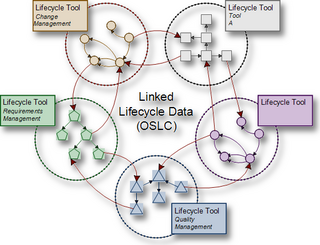 W
WEndeavour Software Project Management is an open-source solution to manage large-scale enterprise software projects in an iterative and incremental development process.
 W
WIterative and incremental development is any combination of both iterative design or iterative method and incremental build model for development.
 W
WMisuse case is a business process modeling tool used in the software development industry. The term Misuse Case or mis-use case is derived from and is the inverse of use case. The term was first used in the 1990s by Guttorm Sindre of the Norwegian University of Science and Technology, and Andreas L. Opdahl of the University of Bergen, Norway. It describes the process of executing a malicious act against a system, while use case can be used to describe any action taken by the system.
 W
WThe Mythical Man-Month: Essays on Software Engineering is a book on software engineering and project management by Fred Brooks first published in 1975, with subsequent editions in 1982 and 1995. Its central theme is that "adding manpower to a late software project makes it later." This idea is known as Brooks' law, and is presented along with the second-system effect and advocacy of prototyping.
 W
WOpen Services for Lifecycle Collaboration (OSLC) is an open community, originally proposed in 2008, to define a set of specifications that enable integration of software development. It has evolved, and continues to evolve, to areas such as Application Lifecycle Management (ALM), Product lifecycle Management (PLM), IT Operations and more. The intention is to make life easier for tools users and tools vendors, by making it easier for tools to work together.
 W
WPlanning poker, also called Scrum poker, is a consensus-based, gamified technique for estimating, mostly used to estimate effort or relative size of development goals in software development. In planning poker, members of the group make estimates by playing numbered cards face-down to the table, instead of speaking them aloud. The cards are revealed, and the estimates are then discussed. By hiding the figures in this way, the group can avoid the cognitive bias of anchoring, where the first number spoken aloud sets a precedent for subsequent estimates.
 W
WPyrus is a cloud-based workflow automation and document management system developed by Simply Good Software, Inc. Pyrus comes as SaaS and offers a web-based interface to launch workflows, assign tasks, and manage documents. It is a unified corporate communication environment, accessible from any device. Mobile versions are available for all platforms, including iOS, Android, and Android Wear. Users are able to set up and route workflows without coding and IT assistance.
 W
WA RUP ‘hump’ is a plot of effort spent over time during a particular Rational Unified Process (RUP) discipline. The RUP hump chart consists of a collection of humps for all RUP disciplines. This diagram was created in 1993 during a workshop on architecture and process and was inspired by work by Grady Booch and Boehm. It has been part of the Rational Objectory Process after reviews by Dyrhage and Bylund and moved on to play a more important role in the RUP in 1998 when it served as the initial page for using the digital version of the process. Its final form was published by Philippe Kruchten in 1998. An older version as later used by Jacobson, Booch and Rumbaugh and an altered version was used by Royce.
 W
WJeff Sutherland is one of the creators of the Scrum, a framework for developing, delivering, and sustaining complex products. Together with Ken Schwaber, he presented Scrum at OOPSLA'95. Sutherland contributed to the creation of the Agile Manifesto in 2001. Along with Ken Schwaber, he wrote and maintains The Scrum Guide, which contains the official definition of the framework.
 W
WA use case diagram at its simplest is a representation of a user's interaction with the system that shows the relationship between the user and the different use cases in which the user is involved. A use case diagram can identify the different types of users of a system and the different use cases and will often be accompanied by other types of diagrams as well. The use cases are represented by either circles or ellipses.
 W
WThe V-model is a graphical representation of a systems development lifecycle. It is used to produce rigorous development lifecycle models and project management models. The V-model falls into three broad categories, the German V-Modell, a general testing model and the US government standard.